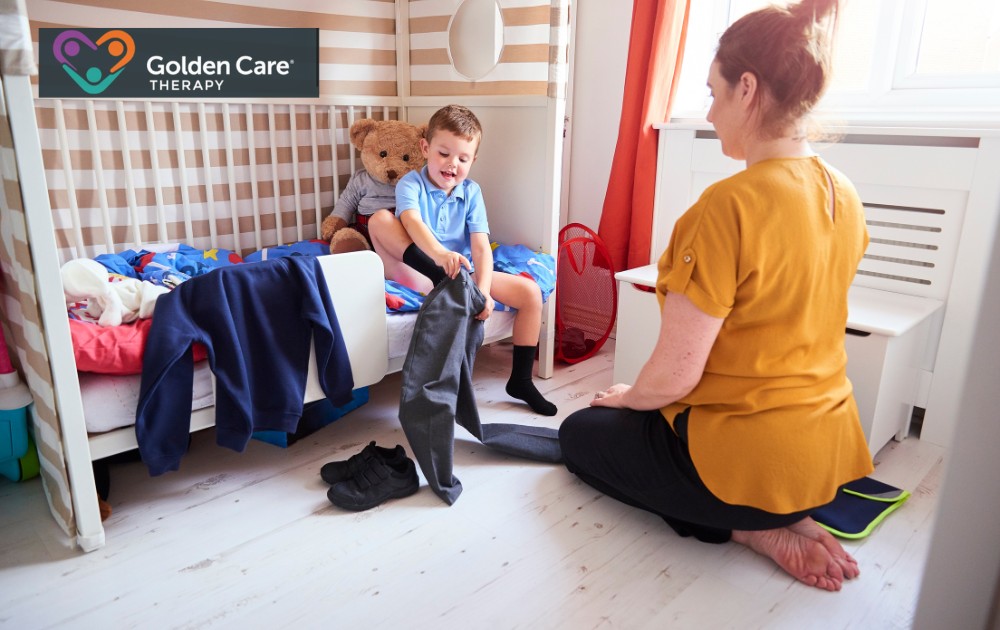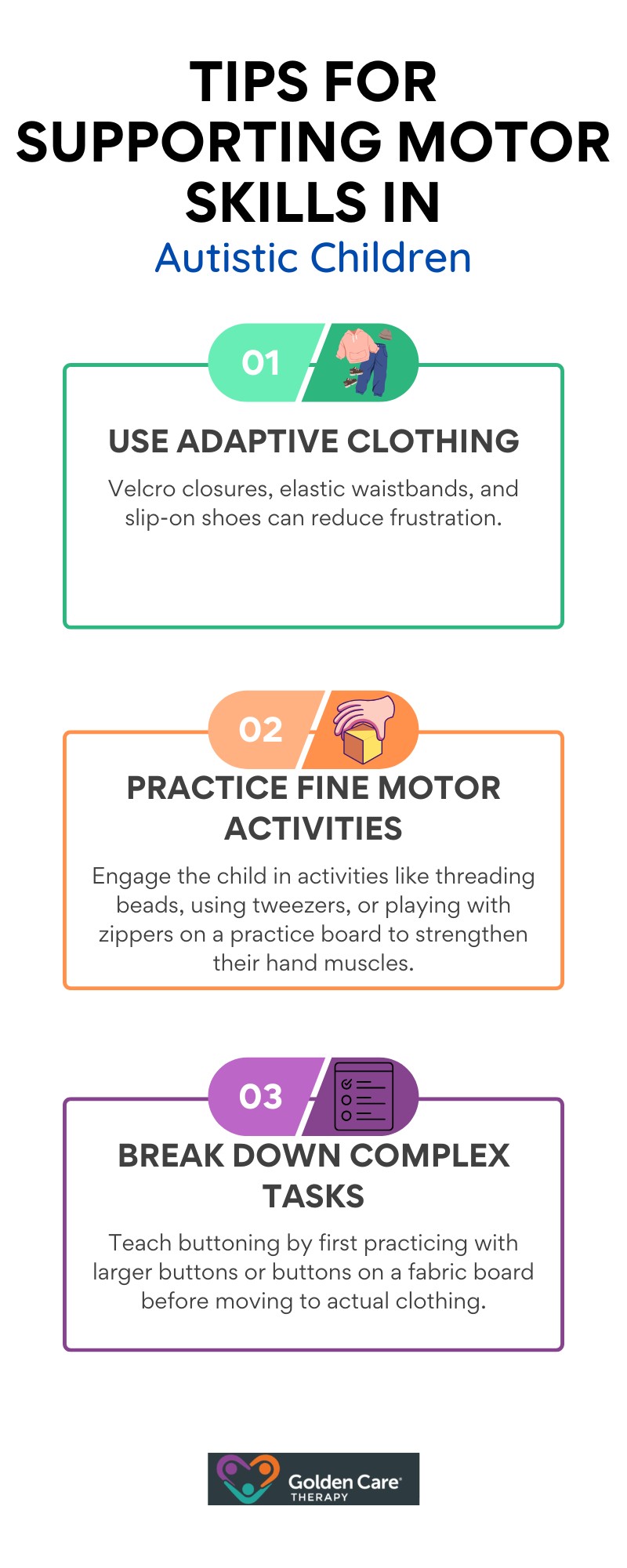Teaching dressing skills to autistic children can be a rewarding but intricate process, requiring patience, creativity, and an individualized approach. For many autistic children, dressing is not just about putting on clothes – it’s an activity that involves sensory processing, fine and gross motor skills, sequencing, and sometimes, overcoming resistance to change.
Understanding and addressing these challenges step by step can foster independence and confidence in the child.
Understanding the Challenges of Dressing for Autistic Children
Before diving into teaching strategies, it’s essential to understand why dressing might be difficult for some autistic children, including those with high-functioning autism. Sensory sensitivities can make certain fabrics, tags, or fits intolerable. The sequence of actions required to get dressed might feel overwhelming, especially if the child struggles with executive functioning.
Additionally, some autistic children may have motor skill delays that make tasks like buttoning, zipping, or tying shoes challenging.
Understanding these difficulties allows caregivers to tailor their teaching methods to meet the child’s unique needs.
Building the Foundation for Teaching Dressing Skills
The first step is to create a supportive and structured learning environment. Start by breaking down the process into manageable steps and focusing on one task at a time. A gradual, patient approach helps the child feel less overwhelmed. Consistency in routines, prompts, and expectations can also create a sense of predictability, which many autistic children thrive on.
Incorporating Visual Supports and Instructions
Visual aids are a powerful tool for teaching dressing skills. Many autistic children are visual learners, and a sequence of images or photos showing each step of the dressing process can be immensely helpful. For example:
- Lay out the clothes.
- Put on underwear.
- Put on pants
- Pull on a shirt
- Put on socks
- Slip on shoes
You can use laminated cards, a poster in the dressing area, or even a digital tablet app that allows the child to swipe through the steps. Pairing visuals with simple verbal instructions reinforces the process.
Addressing Sensory Needs
Sensory issues are often one of the biggest barriers to successful dressing. Some children may dislike certain textures or fits, while others might feel distressed by tags, seams, or restrictive clothing. Here are some tips to address these challenges:
- Look for clothing made from soft, seamless materials, and avoid items with tags or rough stitching.
- Gradually introduce the child to new textures, starting with short periods of wearing the item and gradually increasing the time.
- Allow the child to pick clothes they feel comfortable in, even if it means wearing the same type of shirt or pants frequently.
If the child experiences significant sensory discomfort, occupational therapy can help develop strategies to manage these sensitivities.

Practical Steps to Teach Dressing Skills
Once the foundational elements are in place, you can begin working directly on dressing skills. Here’s a step-by-step approach:
Start with Undressing
Teaching a child to remove their clothes is often easier than teaching them to put clothes on. It allows them to understand the basic concepts of dressing and provides a good starting point. Focus on one item of clothing at a time and praise their efforts.
Choose Clothes That Are Easy to Put On
Begin with loose, simple clothing like elastic-waist pants, pull-over shirts, and slip-on shoes. These minimize frustration and help the child focus on mastering the sequence.
Model and Demonstrate
Show the child how to perform each step. For example, demonstrate how to hold a shirt, find the tag to identify the back, and put it over the head. Use clear, concise language and repeat as needed. For some children, using a mirror can also help them see what they are doing.
Provide Hand-Over-Hand Guidance
If the child struggles with a specific motion, gently guide their hands to help them complete the task. Gradually reduce this assistance as they become more confident.
Encourage Independence with Small Steps
Encourage the child to try one part of the task independently, such as pulling up pants or slipping on shoes. As they master one task, gradually add others until they can dress themselves fully.
Practice Daily
Consistency is key. Incorporate dressing practice into the daily routine so it becomes a regular and expected activity. Morning routines are a natural time for this practice.
Supporting Fine and Gross Motor Skills
Many dressing tasks require fine motor skills, such as buttoning, zipping, or tying shoelaces. If these tasks are challenging, consider the following:

Handling Resistance to Dressing
Resistance is not uncommon, particularly if the child finds dressing uncomfortable or overwhelming. Here are some strategies to ease resistance:
- Turn Dressing Into a Fun Activity: Use games, songs, or rewards to make the process more engaging. For instance, you might challenge the child to “race the clock” to put on their socks.
- Offer Choices: Allow the child to choose between two or three clothing options to give them a sense of control.
- Stay Calm and Encouraging: Avoid expressing frustration or impatience. Praise even small successes to build confidence and motivation.
Transitioning to More Complex Skills
As the child becomes proficient in basic dressing skills, you can introduce more complex tasks, such as layering clothing or dressing for specific weather conditions. Use the same principles to guide them through these new challenges.
Buttons, zippers, and shoelaces are often the next hurdles. Demonstrate the movements slowly, using verbal prompts like “pinch, push, and pull” for zippers or “loop, swoop, and pull” for shoelaces. Adaptive tools, such as zipper pulls or button hooks, can be helpful during the learning process.
The ultimate goal is for the child to dress themselves independently. Celebrate milestones and reinforce their progress with positive feedback. Over time, gradually reduce the level of support and prompting to allow them to take ownership of the task.
Encouraging independence also means allowing for some mistakes. If a shirt is on backward or socks are mismatched, resist the urge to correct them immediately. Instead, guide the child to recognize and fix the issue themselves.

Final Thoughts
Teaching dressing skills to autistic children is not just about helping them get ready for the day – it’s about fostering independence, building confidence, and creating a sense of achievement. With patience, understanding, and the right strategies, caregivers can help their child overcome challenges and master this essential life skill.
Remember, progress may be slow at times, but every small step forward is a significant victory. At Golden Care Therapy, we are proud to provide high-quality ABA therapy services in Indiana, New Jersey, New York, Georgia, and Florida.
Our dedicated team of experienced professionals is committed to delivering personalized care that meets the unique needs of each individual. Contact us today to learn how we can support your journey and make meaningful progress together.
Let’s take that next step forward!
Sources:



